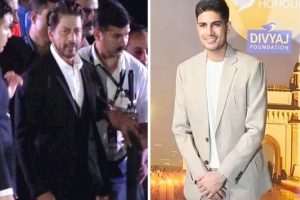The pandemic has brought some semblance of democracy to the world of Hindustani music by giving young artistes the centre stage
As the fresh-faced youngster takes the stage, there are few expectations among the socially-distanced music lovers scattered around the Veer Savarkar Hall in central Mumbai. At best, you think, he will be competent; at worst, the occasional slip.
Then Siddharth Belmannu starts and jaws drop. In a stunningly assured Todi, there is both flair and depth, confidence and quietude. This kind of craft is the preserve of the old masters, not of a 25-year-old.Belmannu was among the eight early career Hindustani vocalists to make their voices heard at Gharana GenNext, a 12-hour marathon hosted by impresario Shashi Vyas’ newly-launched networking platform for youngsters, Grace Foundation.
In a dynamic music tradition, an event like GenNext would not be a rarity. The Carnatic ecosystem, for instance, keeps doors open for young performers with avenues and platforms. The sabha pipeline, for all its flaws, regularly pushes out new names every once in a while. Its audiences are large, informed and generous enough to give fresh talent a fair hearing. A young artiste is not an aberration in this world, but the norm.
But Hindustani circuits, fossilised over time, have become the monopoly of about a dozen names, with no systematic entry points for the young. So much so that the popular belief is that this music tradition is moribund, well on its way to extinction without a next generation to pick up the baton. The truth, however, is that there is magnificent talent waiting in the wings, straining at the leash, desperate for opportunities. The system, however, is loaded against them.

Abhishek Borkar
The best an aspiring performer can hope for is a starter slot just before the marquee name — served up mostly as an appetiser to the real feast. “The trouble is that our emphasis has shifted from the art to the artiste, creating a sort of coterie. If content was more important you would have a wider range of artistes in the fray. The problem is also that the audience for Hindustani music is ageing and they only patronise known names,” says Vyas. “If you schedule a young artiste before a big name, people arrive just in time for the star. We need to showcase the young on their own, even if only 50 people attend.”
A crippling culture of reverence circumscribes the Hindustani orbit, discouraging change, debate or dialogue and distancing the young. Any conversation rarely gets past oft-repeated profundities — about its ‘5000-year-old’ antiquity, its oceanic depths, its superiority, its spirituality, its sheer inaccessibility. In this world being young is a serious handicap.
“Yes, yes. If you are not nearing 50 you can’t have reached anywhere. If you are 25-30, you are told abhi bahut aage jana hai or lamba rasta hai. The establishment is averse to change, there is pride in the fact that little changes here — aise hi chalta aa raha hai. But in any other art, you are judged for talent, not age,” says young Pune-based sarod player Abhishek Borkar.
The stranglehold was broken last year. Ironically, it was the lockdown that managed to bring a semblance of democracy into this world, putting a lot of young artistes centre-stage. It made everyone invisible, the star as well as the struggler. And in this vacuum, the young had the upper hand — they were more anxious to stay relevant, more resourceful and, most importantly, far more digitally active. Over social media, in digital events, however badly produced, a whole bunch of superbly talented youngsters became visible — talking, singing, playing.

Suddenly the Hindustani tradition seemed not just alive, but kicking. “It sort of levelled the playing field,” says Agra gharana singer Priya Purushottaman. “Young musicians managed to capitalise digital resources to amplify their voices, not just by performing, but by writing, speaking up on issues, disseminating their work.” Last year also saw this world shaken by allegations of sexual harassment against some of the pillars of the Hindustani tradition. “Some of the intimidating aura around this music has to be deconstructed to make it accessible. It is a baggage we can do without,” says Purushottaman.
In this new world, music entrepreneurs thrived, especially those who had already been using alternate platforms and showcasing fresh talent. Devina Dutt’s First Edition Arts goes with what she describes as “off-market musicians” who are not beholden to the establishment. Deepsankar Bhattacharjee (sitar), Aditya Modak (vocal), Rujuta Lad (vocal) and Pratik Srivastava (sarod) are some of the fresh names to find a place on its YouTube menu. Dutt now wants to move to an even younger league, those between 25 and 30.
“In social media and over private conversations, I find that the young are questioning old hierarchies. I guess this is because the young are now more anxious about their future,” says Dutt.
In March, Borkar launched Artistes United, a Facebook forum for young artistes featuring 450 musicians. Of them, 90% were going live for the first time. “Attempts like these loosened the hold of the establishment, bridged the payment gap. Otherwise, the top bracket earns ₹5 lakh a concert, while the young have to make do with as little as ₹5,000,” he says.
Online also meant all kinds of collaborations and experiments that allowed youngsters to find new audiences and sustain themselves. The eminently talented US-based Samarth Nagarkar was among the first to engage directly with listeners through exclusive subscription-based platforms like Patreon, where Nagarkar offers paid concerts, talks, and workshops.

Samarth Nagarkar
“There is simply not enough work for young musicians past their taleem and looking to perform, needing to make ends meet. Networks matter, with little space for merit. Since there are few opportunities, insecurities run deep. The lockdown, however, forced us to accelerate efforts to connect directly with audiences, improve our visibility, and supplement earnings,” says Nagarkar, who has had 85-100 subscribers for Patreon shows at various points over the year.
For most musicians, of course, the real joy lies in live events. For them, the digital medium is at best an effective magnet to pull more listeners into their live concerts by raising their profiles.
So, will the post-Covid world see a shift in the establishment? Nagarkar is not very hopeful, but believes there will be some rethink on age bias and the huge payment gap between old and young performers. He sees the possibility of audiences wearying of old fare and seeking freshness.
“There is an ocean of deserving talent out there, those who can carry a concert on their shoulders. The onus is on organisers to give platforms to them,” he says.
With a confidence that only the young can muster, Belamannu believes that you can never go wrong with content that has integrity. “I am not chasing fame or money but good music always finds audiences. It is a great responsibility I carry on my shoulders, I am aware of that.”
The Delhi-based writer
explores the intersection between culture and society.



Add Comment